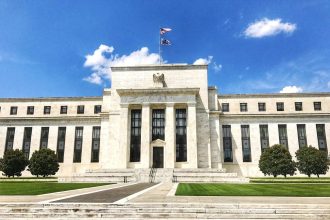A little more than four years ago, the Federal Reserve removed withdrawal limitations that banks had to enforce on savings accounts.
But since then most banks haven’t changed their policies in response. Many high-yield savings accounts and money market accounts still have some restrictions on the number of withdrawals or transfers that can be made.
Until April 2020, Regulation D limited account holders to a maximum of six convenient withdrawals and transfers from a savings deposit account per statement cycle. (Savings and money market accounts are considered savings deposit accounts.)
Before the restrictions were lifted, unlimited withdrawals from an ATM or a bank teller were permitted from savings deposit accounts. But convenient withdrawals, such as via check or transferring money electronically from a savings deposit account to another account, were limited.
List of top banks that eased their limits
Bankrate reviewed 66 bank websites to find what withdrawal and transfer limitations were placed on savings or money market accounts. Bankrate found that 41 had limits while 24 didn’t.
“They do not want to change these accounts to make them completely transactional because technology these days makes it much easier than it was before to make withdrawals,” says Chris Cole, executive vice president and senior regulatory counsel for the Independent Community Bankers of America (ICBA).
Some banks either permit more than six withdrawals or transfers each statement cycle or don’t track the number of times withdrawals or transfers are made from savings deposit accounts. Among them:
- Ally Bank: Imposes a limit of 10 withdrawals and transfers per statement cycle, according to its website. There’s no fee for going over the limit, but the account will be closed if the limit is exceeded on a regular basis.
- KeyBank: The Key Active Saver account limits the number of withdrawals or transfers to seven a month. There is no fee for going over the limit.
- U.S. Bank: The Minneapolis-based bank has no transaction limits and charges no fees for savings withdrawals.
Among the findings, Bankrate’s review of top banks and credit unions showed that Huntington Bank charges $2 for excess transactions, while BMO, KeyBank, Truist and Zions Bank all charge a $15 fee on at least one of their savings deposit accounts.
2 reasons many banks still limit savings withdrawals and transfers
1. It’s optional for banks — they’re not required to change their limits
Banks were able to suspend the six-transfer limit, but they weren’t required to, which is likely the main reason some banks haven’t changed their limits on transfers or withdrawals.
2. It’s not a final rule
The removal of limits on withdrawals and transfers from savings deposits was an interim final rule.
“[Banks are] still waiting for that final piece — meaning that they’re still waiting for a final rule to be issued by the Fed before they actually implement [changes],” says Heather MacKinnon, vice president of legal at the Wisconsin Bankers Association.
Restrictions might be good for encouraging saving
Some savers may benefit from having withdrawal and transfer limits on savings deposit accounts. Only about 44 percent of Americans were able to pay a $1,000 emergency bill from savings, according to a Bankrate survey published in January.
Knowing that withdrawals are limited may prevent some savers from withdrawing or transferring funds too frequently, helping to keep their savings intact for times when they truly need it.
—Bankrate’s Sheiresa McRae Ngo contributed to an update of this article.
Read the full article here
















